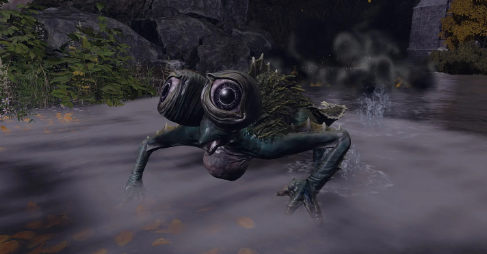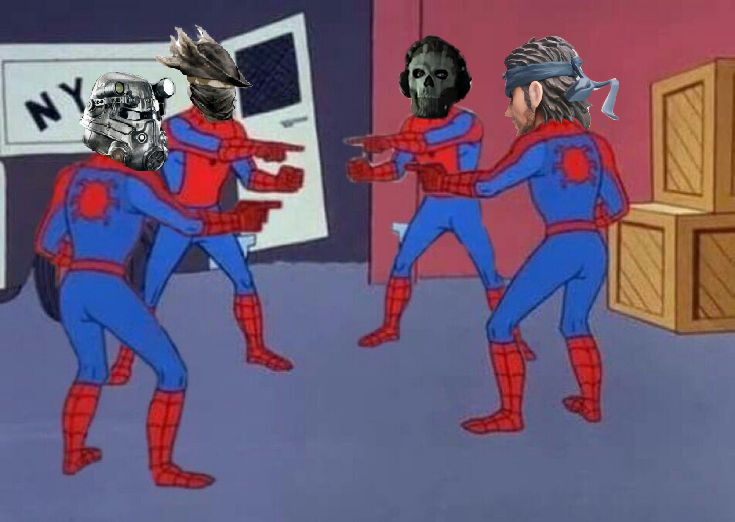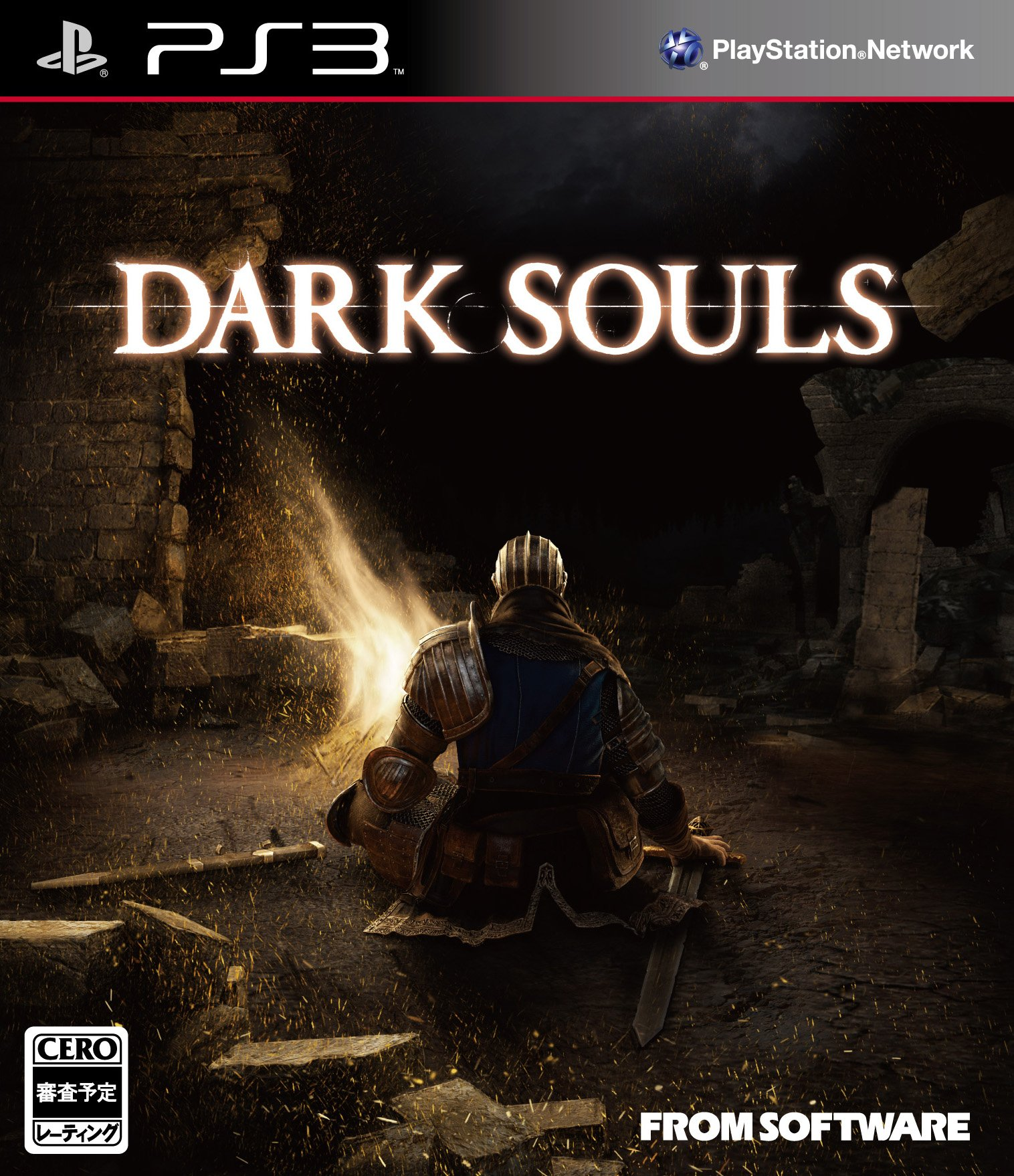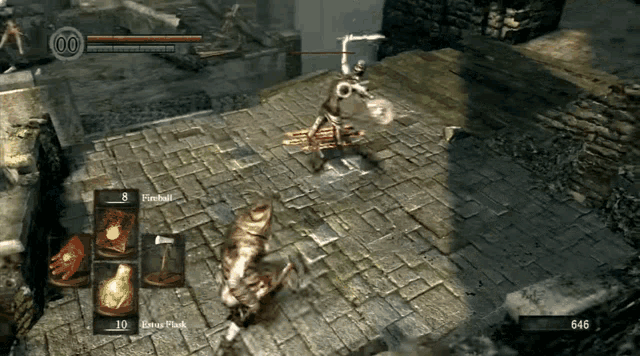At the level of critical oversaturation a game like Dark Souls has reached, you are legally required to have something actually new to say about it. Otherwise, FromSoft sends a real-life version of one of those Depths frog-things to your house. It’s true, I heard it from my friend on the playground!

If you know, you know…
Among the sea of endless debate about whether or not the franchise should have easy modes, ‘Dark Souls being a cozy game’ is a fresh take – most likely because of how absurd it sounds. To be clear, I’m not “Die Hard is a Christmas movie”-ing this. This isn’t a categorization purely for categorization’s sake, and there’s valuable takeaways for game developers about the nature of ‘cozy gaming’ that I can only reach after you’re with me on the “Dark Souls is one” thing.
The first trapping to let go of is the idea that a game’s visuals, aesthetics, or mechanics directly influence the categorization, because they don’t. It sounds ridiculous when laid out like this — how can the individual components of an artwork have no bearing on the genre? Well, we don’t treat genres of any other mediums like this. Movies aren’t categorized into genres by the content of their individual scenes. Mad Max and The Batman both have car chase scenes, but one is a dystopian action film while the other is a crime drama. These individual scenes can contribute to the genre, but only when considered in the context of the overall work.
So… what do we categorize by? Consider how people refer to genres: “I’m feeling sci-fi today.” People gravitate to certain genres by virtue of a shared set of emotions. Adventure films may look completely different from one another, but they all give you the feeling of a swashbuckling journey through uncharted territories. If emotions are colors, you can think of genres as paintings that share a palette, even if they depict wholly different subjects.
Regardless of other mediums, many would be skeptical that such a reading fits games, which are often defined entirely by their core mechanic. In reality, I find that designers talk about games like this much more often than games audiences do. It’s quite difficult to think of a single emotionally compelling game wholly defined by a singular mechanic. Games are a rich combination of emotive materials just like any other art-form, and the idea of a singularly defining “core” mechanic is outdated. We regularly observe games reuse many similar mechanics to their contemporaries without falling into the same genre. Metal Gear, Fallout, Call of Duty and Bloodborne all involve firing a gun but nobody would confuse any of these works as remotely similar.

You’re a cozy game! No, you’re a cozy game!
I would be remiss to not mention the gendered element of the ‘cozy’ moniker, which is often associated with games made for a predominantly female audience. I think this topic is large enough for another discussion entirely, so I will link this great video essay by Graythorn about how games with similar mechanics are taken seriously or not based on superficial traits: The Worst Double Standard in Gaming
Where do we start then in defining what a “cozy” game is? Let’s begin with the word itself. Cozy isn’t exactly the same as comfortable; you are cozy when sitting by a campfire in a dark forest, or huddled up in your bed during the deep of a winter night. The word implies a sublime quality, a danger lurking just beyond where the speaker is. Cozy is a safe space in the midst of a dangerous world.

This is the original Japanese box artwork for Dark Souls before we Americans got that dreadful localized version. We see the player avatar — the Chosen Undead — sit beside a bonfire, which restore the players resources and act as brief moments of respite during the endless dungeons of the game world. After enduring whole sections of pure danger and despair, catching a glimpse of a bonfire’s red-orange flames fills the player with a feeling of incomparable safety and calm. Here lies the key emotive core of Dark Souls: chipping away at a desolate and scary world, one bonfire at a time. This is a game filled with dragons, wizards, horrific beasts and gorgeous 100-foot-tall goddesses! Nevertheless, the protagonist resting by a bonfire is the image FromSoft chose to represent Dark Souls.
Coziness.
But wait, you say, Dark Souls is mostly a tense action game with role-playing elements that is famous for brutal difficulty. The individual moments of sitting at bonfires don’t add up to more than a single percent of a playthrough. How can this possibly be a fair assessment of the game’s emotional goal?
I find the ‘mathematical’ approach to categorizing games completely ineffective, especially because audiences never talk about other mediums like this. Imagine if people identified Transformers as a more of a war movie than Zero Dark Thirty by the number of explosions. Great art spends most of its time setting up the big, hard-hitting moments that affect you emotionally. Again, a game’s genre is a product of the strongest emotions it makes you feel, not the mechanics or aesthetics it employs in the process.
Putting the final nail in the cozy coffin involves separating Dark Souls from the genre it’s traditionally associated with, Action. For how popularly it’s grouped in with action games, Dark Souls shares incredibly little with those contemporaries. The other standouts serve to empower the player with a unique moveset representative of the game theme. Dante from the Devil May Cry series utilizes a plethora of absurd weaponry to fulfill your fantasy of being a stylish demon hunter, while Bayonetta’s titular heroine makes you feel like an elegant dancer as she pirouettes from one racy move to the next. Dark Souls… has none of this. A typical playthrough involves stepping up and poking an enemy before backing off to safety, over and over until the job is done. It’s hardly engaging by itself, made all the more clear by FromSoft’s other game Sekiro, which has a dexterity focus and plays fundamentally differently than any of their other work.

“This right here is 90% of Dark Souls combat,” I say with love.
No, Dark Souls is not special because of the intricacies of the combat system, much to the demise of copycats who incorrectly identified this as the secret sauce. Slow animations and hard-hitting enemies are deliberate design choices, yes, but they are supporting elements rather than fundamental. Souls series director Hidetaka Miyazaki famously claimed he never prioritized creating a ‘difficult’ game. This sounded absurd at the time, but it makes more sense after playing the game and especially after playing other clearly inspired projects that miss the mark. Dark Souls doesn’t brutalize you as much as it wants you to succeed and feel the warmth of the next checkpoint. The fact that the multiplayer systems have a clear bias towards cooperative play rather than antagonistic PvP play bolsters this notion. The harshness of the world simply serves as the dark forest around that campfire.
We assume Dark Souls is a difficult game because we associate death to be a failure state, but the assumption that mechanics foster the same emotions in every game requires rethinking. Death in Dark Souls initially feels punishing because it takes away so much: the progress you’ve made in the level, and your souls, the de-facto points system of the game. Despite this, Dark Souls forces death upon a new player so frequently that they learn to stop fearing it, and can even see it as a tool. In my first playthrough, I often went on ‘scouting runs’ where I had zero souls in order to survey a location and gather information. Death acted as a safety net, as it would simply bring me back to the bonfire without punishment. The repeating content doesn’t hurt when most levels in the game are quite short anyway, having a span of maybe 3-5 minutes of in-game walking. Most if not all non-boss encounters can be skipped by a clever use of running and jumping, turning the game into a faux-platformer. Dark Souls doesn’t use death to punish you; rather, it gently teaches you that death is just another tool in your arsenal to conquer the content. Ask any player who has reached completion and they will no doubt tell you that the deaths eventually stopped hurting as much as they did in the introductory hours. As you expand your exploration of Lordran out from the home-base of Firelink Shrine, more and more of the map begins to feel safe, like building little campfires out from your first one. The game is expertly produced to leave just enough room between bonfires that each and every one feels like a treat to find. This brilliant emotional pacing is the true champion of Dark Souls’ design rather than the surface level mechanical rules of the combat engine.
In the mainstays of the cozy genre, we see the necessary darkness shine through and through. There’s a haunting quality to the quietness of Animal Crossing’s world. Your villagers in AC can leave anytime, giving you a short warning when they rest by a campfire, taking memories and gifts with them. Stardew Valley gets scary after night falls, and the entire narrative has an ever encroaching megastore that threatens to replace the local businesses. Losing a harvest in Stardew is arguably worse than ten deaths in Dark Souls. This darkness and loss is more than important – it is integral to the cozy feeling.
If you don’t want to hear it from me, hear it from Katie Chironis, senior designer at Riot Games:
in both series there is a lot of wistfulness, sadness, even anger from some characters and elements (Mr. Resetti! Grouchy villagers!) because these are the things that lend believability to the fantasy, which makes it more compelling. can't make cake without a little salt, right?
— Katie Chironis (@kchironis) June 26, 2023
I watched the Wholesome Direct this year and it pained me to see what looked like several cozy-likes fall into the same trap that souls-likes did from the opposite direction. Where souls copycats ignore any sense of safety and home to create a cruel, brutal and ultimately forgettable combat simulator, cozy-likes fear any negativity in their perfect candy simulation as if it would infect the happiness. Both of these groups of developers could stand to more closely examine the games they so clearly love and feel the warmth of their tones brave against the cold of their moods. Sheer positivity without any counterbalance risks a cynicism greater than that of the apocalypse.
I don’t wish to cast judgment on artists creating what they want to create, but if your express goal is to make a “cozy” game, you have to be aware of what that word means and what makes games of the genre compelling. As a person who credits Dark Souls with helping my journey in overcoming mental illness, I think cozy games are some of the most important games to be making right now. In a world marching towards destruction on so many fronts, we need games that let people feel warmth. However, for this warmth to be genuine, for it to have any staying power in our hearts, it can’t exist without acknowledging the dark forest surrounding us first. Don’t be afraid to fill your dark forest; just don’t forget to give your players the tools to chop down the mighty trees and fuel their campfires.
Or, if you’ve gotten this far and want nothing more to do with cozy games, please try my favorite hardcore survival-horror strategy game, Pikmin.

Special thanks to Bethany Lai, Weston Bell-Geddes & Jebby Zhang for helping me edit this post.
Follow me @wheatpenguin on Twitter.

Comments